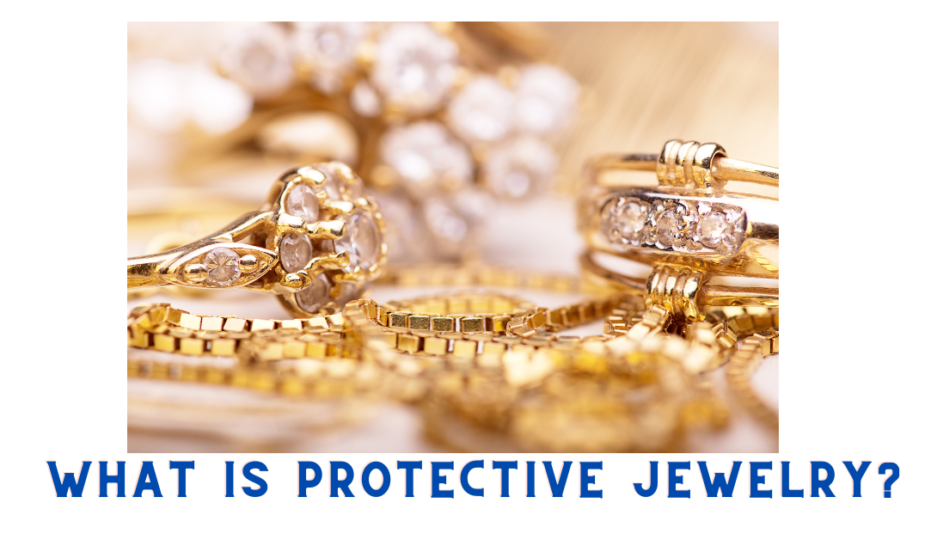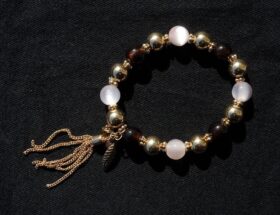Many cultures have agreed throughout the centuries: the best way to protect yourself from harm is to always carry protective jewelry. Fortunately, our research into the past has revealed that there are strategies we may employ to shield ourselves from the toxic vibes, terrible luck, and destructive energy we encounter regularly. American culture has embraced a variety of knotting styles for jewelry-making, from traditional Native American macrame to modern fusion techniques.
Many symbols found in artistic items like sterling silver charms carry varying historical and cultural contexts are still frequently employed in contemporary spirituality and aesthetics. Consequently, they have the potential to serve as meaningful signs of protection that are both aesthetically pleasing and personally significant.
Generally speaking, any jewelry worn to ward against misfortune, bad vibes, and weak vibrations is considered protection jewelry. While it’s true that jewelry designed for protection can ward off harmful influences from the outside world, protective jewelry can also shield you from the destructive effects of your mind.
History of Protective Jewelry
It doesn’t take long for the energy around us to become a permanent part of our lives, and protective jewelry ensures that only good vibes and positive experiences are weaved in. Talismanic jewelry intends to provide comfort and solace even when we feel helpless. Talismanic jewelry for achieving a celebrity smile may boost your confidence and help you achieve your desired smile goals.
To ward against harm to one’s body or soul was an early use of protective jewelry. Prehistoric pieces of protection jewelry were worn to protect their wearers from harm.
The purpose of protective jewelry, also referred to as talismanic jewelry or protection jewelry, has given its wearer a feeling of safety and security for generations. In addition to their aesthetic appeal, these amulets were also thought to have magical properties.
Gems and natural materials have long been thought to contain magical properties and healing abilities beyond the scope of human expertise. Anyone setting out on a lengthy journey, sick children, and expectant mothers were often given protection jewelry.
Types of Protective Jewelry: Notable Protection Symbols
These symbols associated with talismans and protection have a history of being revered for their purported mystical properties and protective qualities. For the best summer chic look, pair a simple outfit with delicate jewelry pieces, such as a thin gold necklace or a pair of understated earrings. At this time of social unrest, everyone could use a bit extra good juju to help them through the day, so we’ve compiled a list of some of the most influential pieces of protective jewelry.
Arrow
Arrows have been used historically and symbolically for various meanings, from friendliness to war. As time has passed, arrows have come to represent various ideas. For example, the arrow represented harmony, unity, and other intellectual notions in addition to being a tool of combat and a means of maintaining life.
Arrows often stand in for other weapons in comics and graphic novels, but they can have other meanings. In some cultures, a rightward-pointing arrow represents safety, while a leftward-pointing one is used to stave off harm. An arrow drawn back into a bow can symbolize difficulty when used in protective jewelry.
Celtic Shield Knot
Celtic shield knots have been used for thousands of years and exist in various designs of protective jewelry. Its small size and single woven thread provide the impression of infinite security. It’s a kind of weaving that doesn’t start or stop, and its continuity is thought to expel evil spirits.
As a safeguard against misfortune and evil, Celts probably had protective symbols prominently displayed in their dwellings. For example, shield Knots were traditionally presented to the ill as an amulet against evil spirits. Similar to their appearance in religious and ceremonial settings, Celtic shield knots are frequently found carved into tombstones.
Dream Catcher
The dream catcher has become one of the most iconic and pervasive emblems of Native American culture. The name comes from the widespread belief that the distinctive hoop and web shape is designed to “trap” nightmares while allowing good dreams to slip through. Dream catcher jewelry gift ideas include necklaces, earrings, bracelets, and rings with intricate designs and meaningful symbolism. The myth of the dream catcher spread to other civilizations as trade and marriages facilitated communication and cultural exchange across Western indigenous communities.
Many think that dream catchers can prevent external harm, not only disturbing dreams. The purpose of a dream catcher is twofold: to shield you from bad dreams and negative ideas while you sleep and to ensure that you wake up feeling invigorated and ready to take on the day. A dream catcher acts like a spider’s web, catching negative dreams and letting the positive ones through.
Evil Eye
You can find protective jewelry with the evil eye sign on them anywhere you go. The evil eye is supposed to ward off harm when worn as talismanic jewelry. Those who cast the “evil eye” believe they are cursing the recipients with illness, misfortune, or other misfortune.
Some cultures believe that casting an envious or disapproving “look” or “stare” on another person will bring bad fortune to them. A common form of evil eye in the Middle East is a talisman called a nazar, which features blue and white concentric circles meant to ward off the evil eye. You can wear an evil eye talisman to ward off such malevolent entities.
Hamsa
The Hamsa is a popular motif in protective jewelry around the world. The Hamsa symbol is perhaps the most widely recognized protective symbol in the world, and its timeless beauty and chic vibe make it a great addition to any wardrobe. The Hamsa was once thought to be the ultimate shield against harm.
It’s important to remember that the Hamsa hand can be worn with the palm facing up or down, depending on the situation. With its downward orientation, it is believed to bestow upon its owner greater happiness, wealth, and success. If you wear it such that the cross is pointing up, it will shield you from harm, whether from other people or your destructive ideas.
Pentacle
In Wiccan tradition, the pentacle is the most critical sign for calling forth spirits. As a result of its broad exposure in horror films, it has become a staple at Halloween celebrations, protective jewelry, and other festive events. People of all ages and backgrounds, Wiccan or not, are fond of donning pentacle-adorned accessories, including earrings, necklaces, and bracelets.
The pentacle, which looks like a five-pointed star inside a circle, is an amulet of sorts in Wiccan and pagan religions. The star’s points stand for the fundamental elements of nature, while the enclosing circle is a womb. For this reason, the sign is employed in ceremonies meant to ward off evil spirits.









